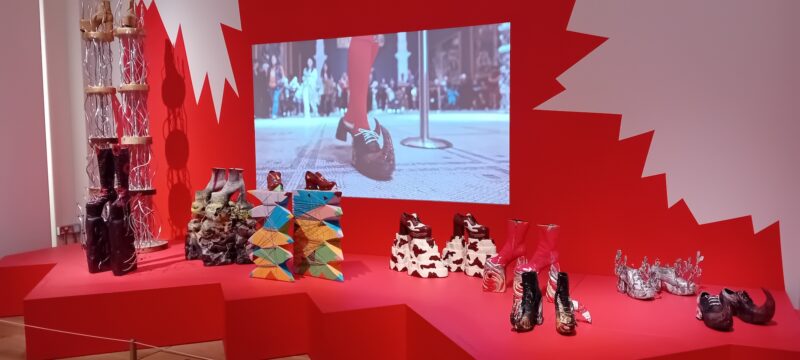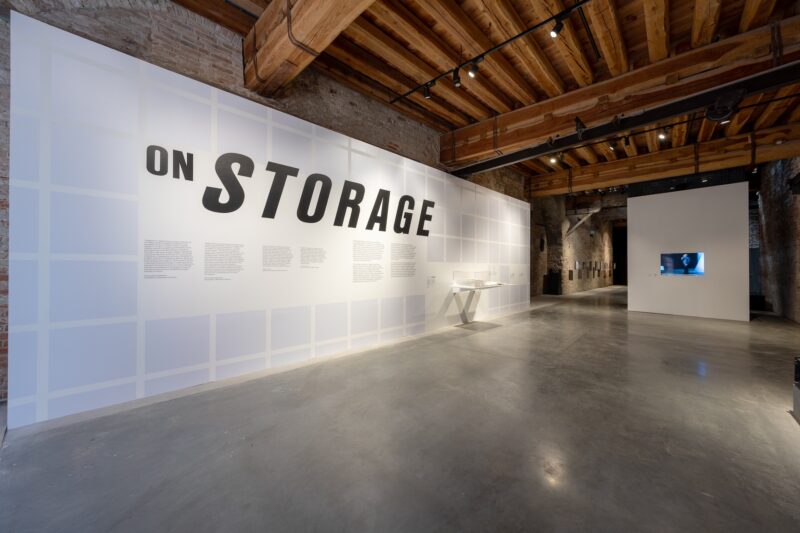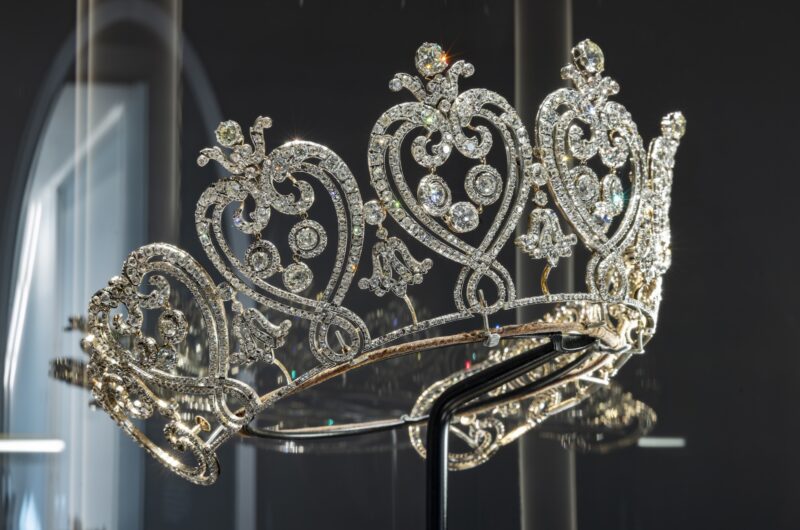Diva, the V&A’s epic new exhibition celebrating the style and substance of some of the best known Divas in the world, is a visual feast that takes visitors on a journey through the fashion and music of the most celebrated actresses, singers and performers from the 19th Century to the present day. Curated by Kate Bailey to showcase the ‘Diva as an expression of femininity, flamboyance and power’, the exhibition is housed under a central dome in the V&A’s fashion section. The exhibition features 60 ensembles and 250 objects drawn from the V&A collection and loans from across the world, spanning fashion, photography, design, costumes, music, and live performance.

Diva is presented in two ‘Acts’: Act I provides the exhibition’s historical context, exploring the roots of the word Diva with displays of costumes and memorabilia from stage and screen. The finale of ‘Act One’ showcases the timeless opera diva, and include costumes worn by Maria Callas from her first and last performances at The Royal Opera House.
Act II is the Mega-Watt segment of the show, featuring a glittering selection of costumes worn by iconic musical divas from the 1960s to now. Act II isn’t all glitter and sequins, for there is a section devoted to unconventional, boundary-pushing Divas such as Debbie Harry, Siouxsie Sioux, Janis Joplin and Patti Smith, and displays featuring Divas who used their platform to fight for civil rights, such as Aretha Franklin, Nina Simone and Billie Holiday.
Diva is made into a truly immersive with a sonic headset experience by Tonwelt, that reacts to each display, playing some of the seminal music by the featured artists and taking visitors on a musical and artistic journey from 19th Century Opera and Technicolour Hollywood through to Pop Goddesses, Disco Divas and Stadium fillers, and providing a sonic soundtrack to bring the fashion and costume alive. Adding to the immersive experience is a planetarium-style video installation designed by BAFTA-winning video designer Tal Rosner.
Kate Bailey, curator of DIVA, explains:
At the heart of this exhibition is a story of iconic performers who with creativity, courage and ambition have challenged the status quo and used their voice and their art to redefine and reclaim the diva.
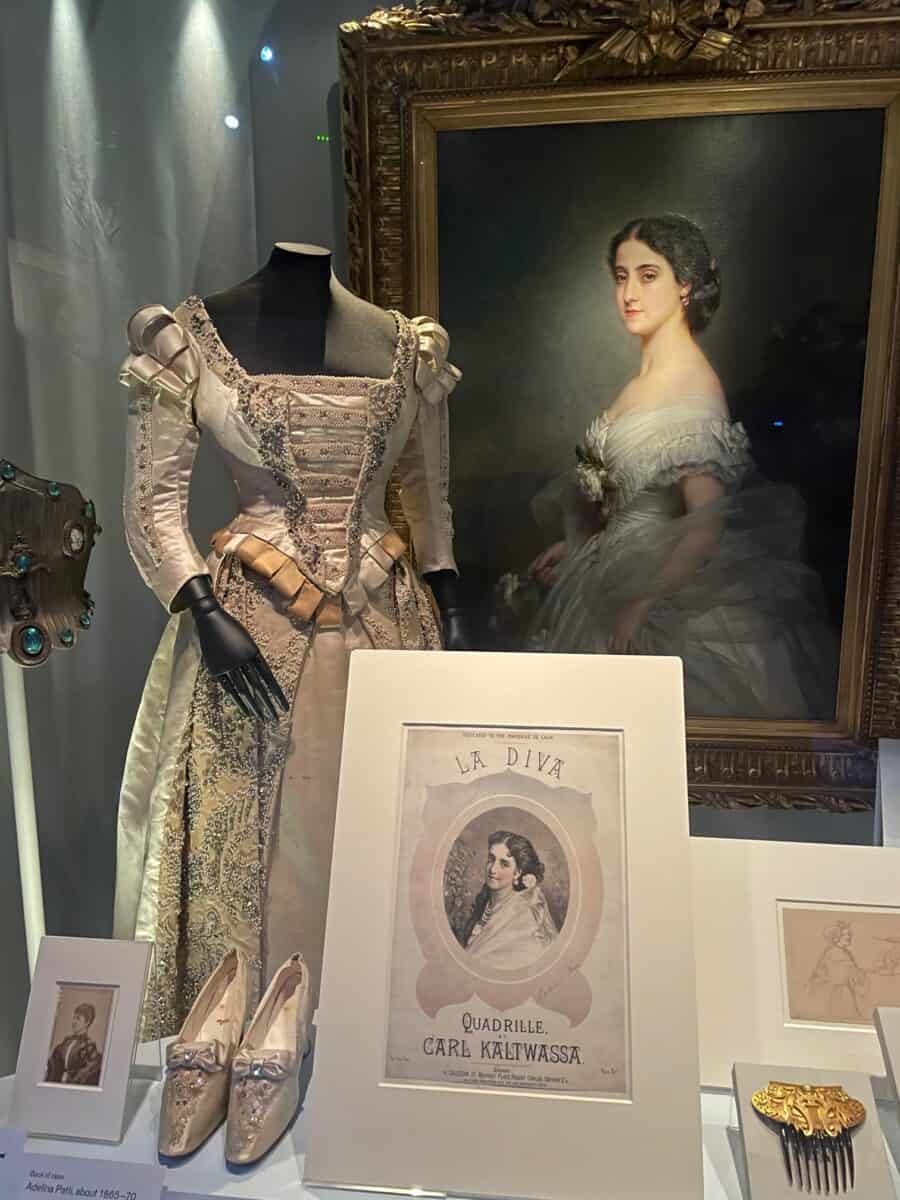
Diva comes from the Latin word for Goddess, and had origins as a term of exceptional power. The word was adopted in the 19th Century to describe distinguished opera singers or ‘Prima Donnas’ (‘First Ladies’). Over time the word became subverted to describe demanding women artists with a strong temperament, taking on a more negative tone. With this new exhibition, the V&A wants to reclaims the word’s origins around Goddesses and strong, creative women.
Featuring iconic performers from opera to stage, popular music to film, Diva explores how the role of ‘diva’ has been both subverted and embraced over time. Diva displays a breathtakingly curated collection of iconoclastic costumes and fashion worn by Queens of the stage, screen and stadiums, including Opera singers, silent screen stars, Hollywood actresses and arena-filling musicians. Costumes worn by early Opera Prima Donnas Adelina Patti and Jenny Lind are displayed next to costumes worn by stars of silent movies, dance diva Isadora Duncan and Hollywood Divas Mae West and Marilyn Monroe.
At the start of the exhibition we learn that the term ‘diva’ was first used in 1883 in the Oxford English dictionary to referring to a distinguished female singer. Our introduction to Diva-dom is through Adeline Patti (1865-70), a Spanish-born Italian Opera singer who was celebrated for her beauty and her voice, touring Europe and America to great acclaim and being painted by Franz Winterhalter in 1865-70 (her ethereal portrait is on display in the exhibition).
Diva celebrates the personal stories and resilience of some of the most celebrated women in the performing arts. We go on a journey populated by famous Divas from the silent film era and the Golden Age of Hollywood (Judy Garland, Monroe, Bette Davis, Elizabeth Taylor, Vivian Leigh et al), through to musical Divas ranging from Opera star Marrias Callas, to Rock n’Roll, Punk and Country & Western eras of Debbie Harry, Janis Joplin, Patti Smith and Dolly Parton, to contemporary artists such as Lizzo, Billie Eilish, Adele and Rihanna. There are some legendary film costumes from memorable movies on display in Act I, including the fringed black dress Monroe wore in ‘Some Like it Hot’ in 1959, a Christian Dior-designed dress worn by Vivien Leigh in the 1958 play ‘Duel of Angels’, and an Edith Head-designed dress worn by Bette Davis.
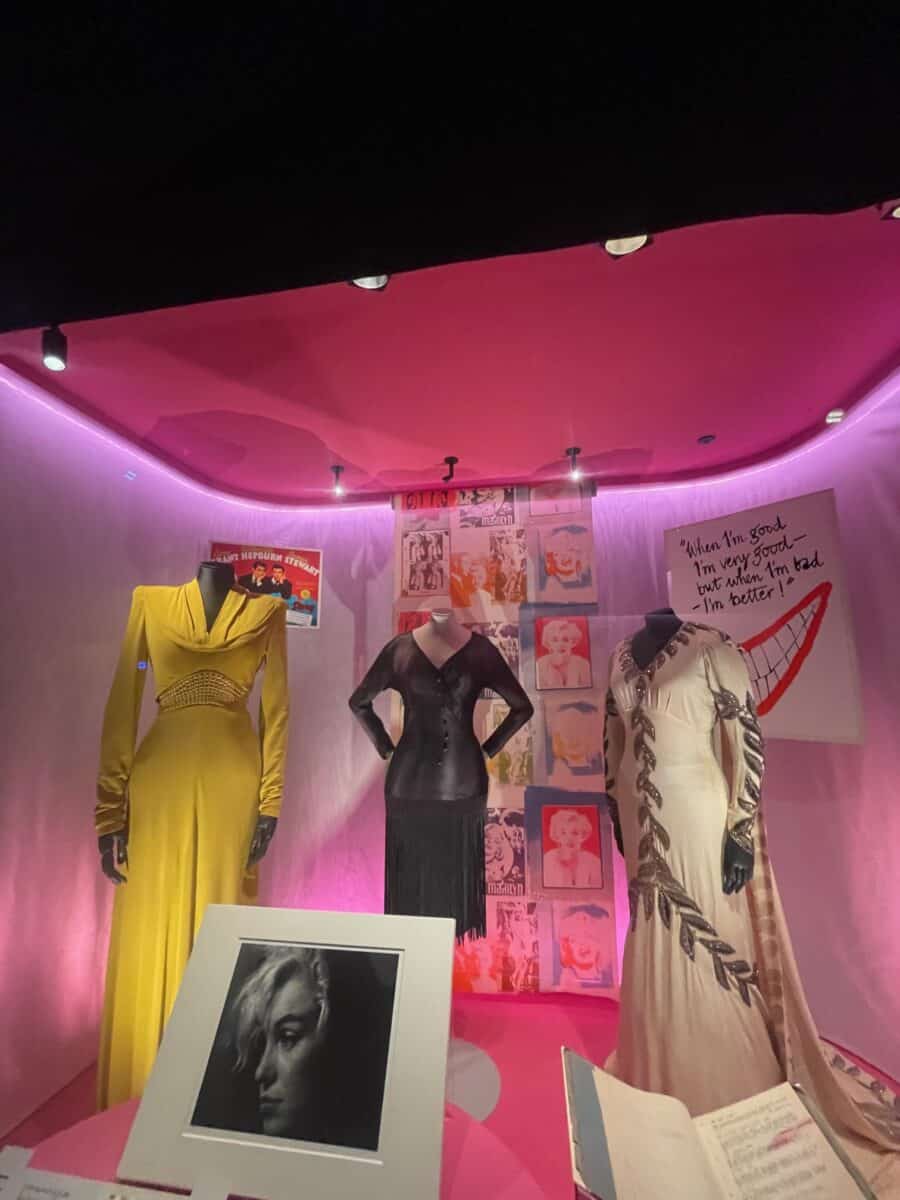
The narrative running through the exhibition is the story of the Diva from the early 19th century to the present and explores whether the word turned into a negative label when creative women started demanding equal rights and power to men with the first wave of feminism in the 1960s, which some people deemed to be demanding. Diva reclaims the Goddess roots of the word and celebrates the creativity of extraordinary artists from the Victorian era through to contemporary culture.
Highlights of Diva include fashion designer Bob Mackie’s most iconic costumes for Cher and the late Tina Turner, which form the centrepiece of the exhibition. Before achieving fame in his own right, Mackie sketched the famous sheer dress that Marilyn Monroe wore to sing ‘Happy Birthday Mr President’ to JFK, when he was a 23-year-old assistant to the designer Jean Louis. Kim Kardashian controversially went on an extreme diet to fit into the dress for last year’s Met Ball, a publicity stunt that Mackie described as ‘a big mistake’ as the dress had been designed only for Monroe to wear.
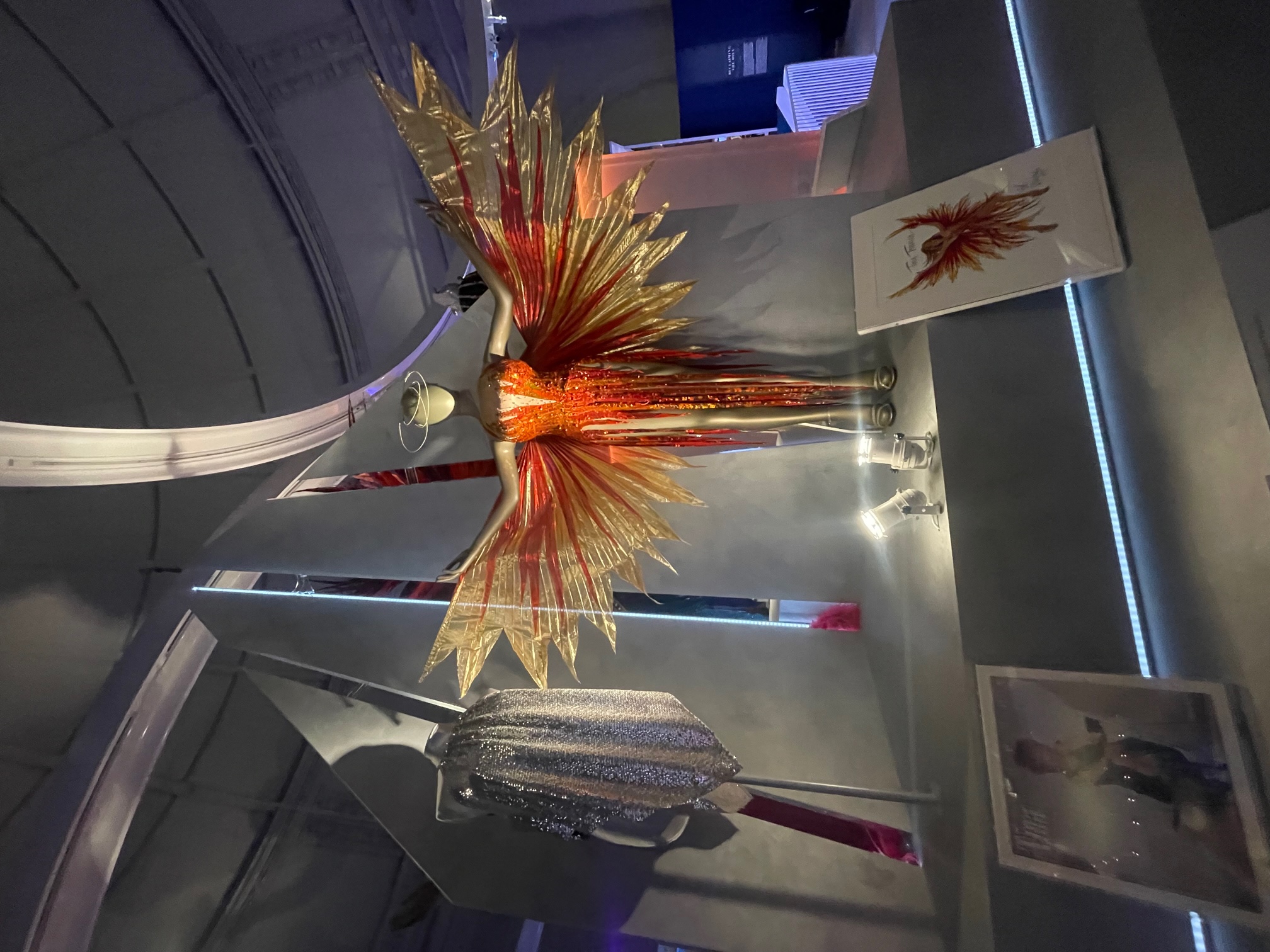
Apart from Mackie’s epic designs including his 1977 ‘flame dress’ for Tina Turner, and Cher’s Mohawk headdress that he designed for her to wear at the Oscars in 1986, other highlights include; Josephine Baker’s 80-year old stage costume consisting of a crystal bikini and not much else; a Vivienne Westwood dress worn by Adele for a Vogue cover in 2021; Pam Hogg’s punkish lycra jumpsuit worn by Siouxsie Sioux; a Preen by Thornton Bregazzi dress that belonged to Amy Winehouse; a bejewelled Papal-style John Galliano dress worn by Rihanna to the 2018 Met Gala; and Edith Piaf’s sensible black dress, which shows how much bigger her voice was than her diminutive frame.
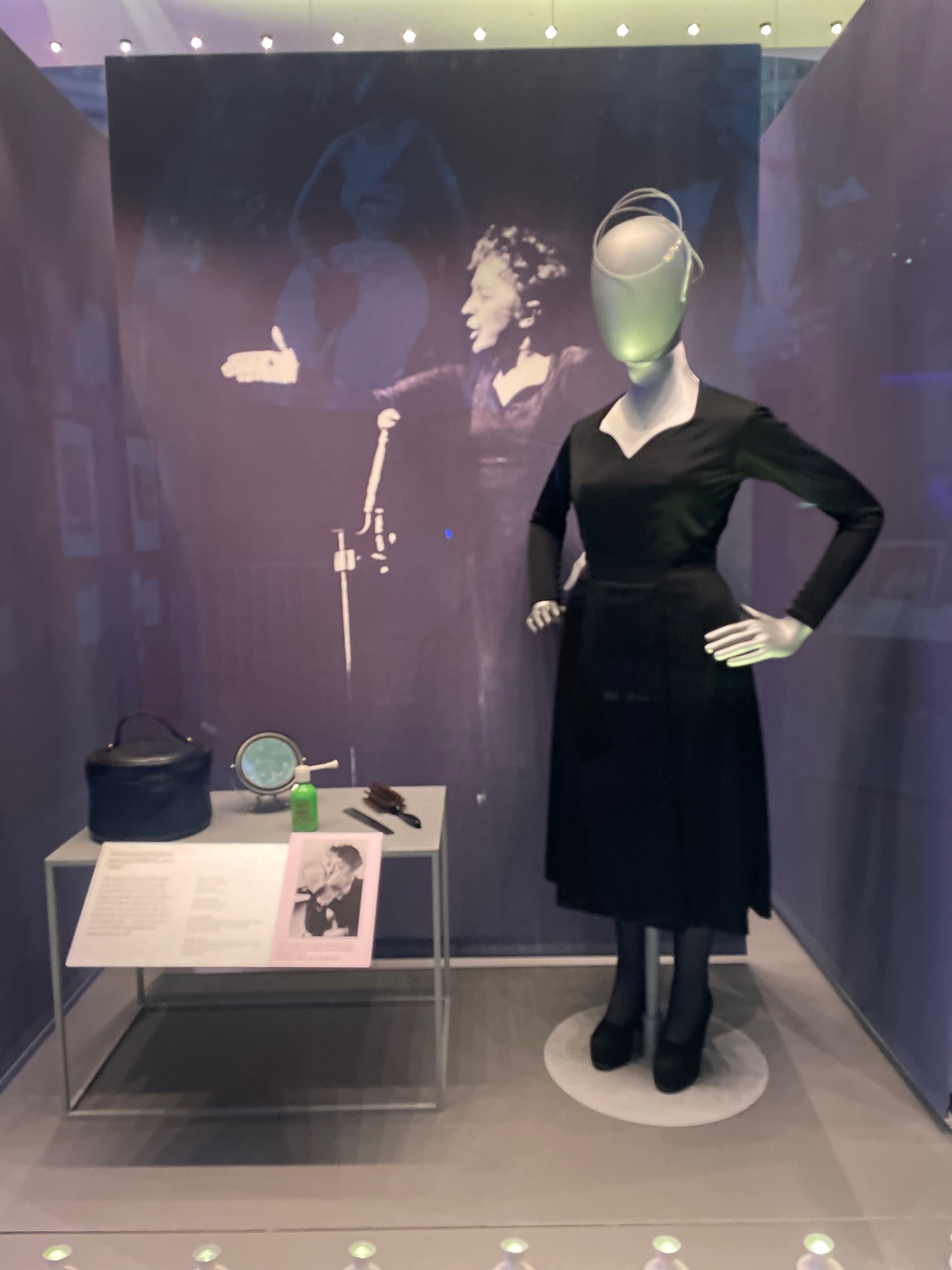
Dame Shirley Bassey’s gowns designed by Julien McDonald and the Swarovski-studded wellington boots she wore for her star turn at Glastonbury are displayed, as well as the androgynous stage outfit designed by Stella McCartney for Glasto’s youngest ever performer, Billie Eilish, representing the next generation of Divas with a voice and a platform for change.
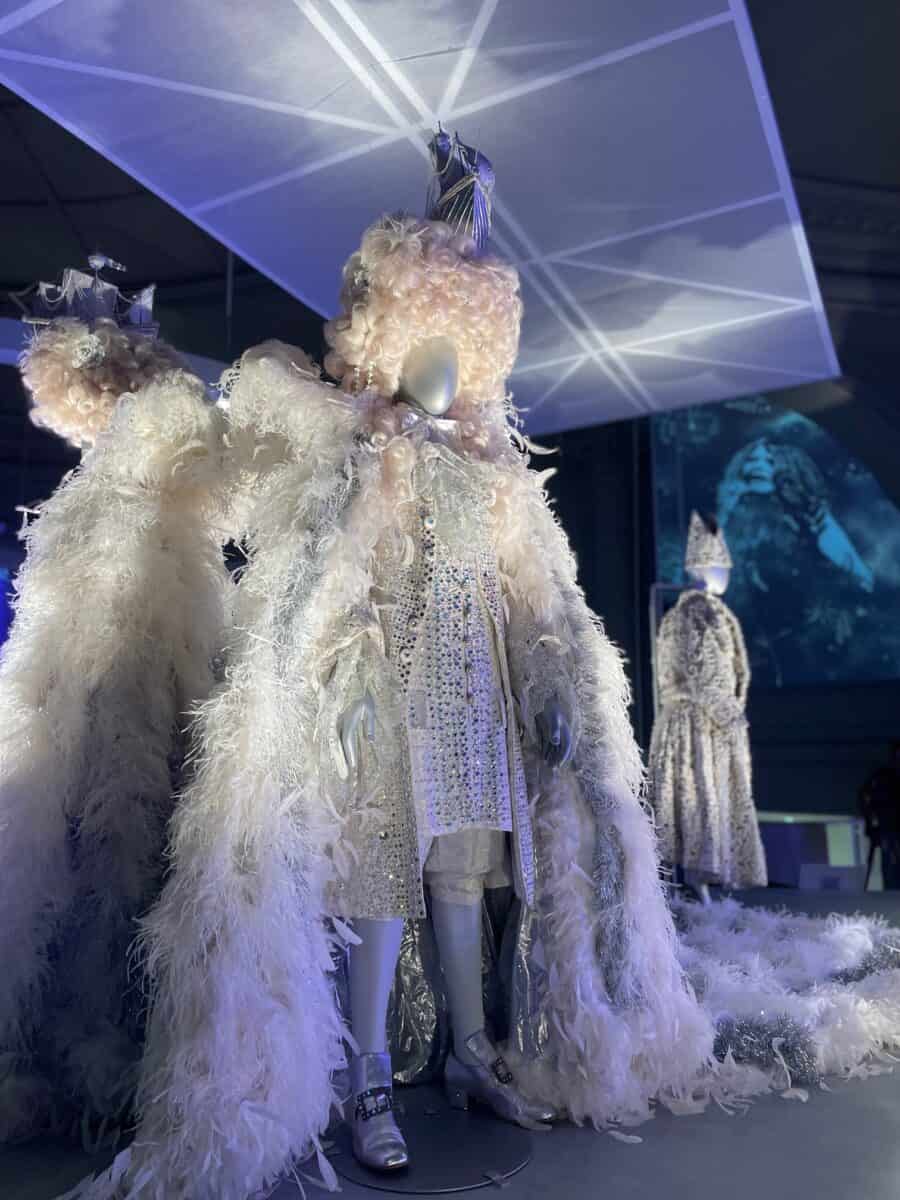
By a narrow margin, for it has to compete with Bob Mackie’s flamboyant designs that grace the central podium of the exhibition, the pièce de résistance of Diva is a theatrical outfit designed for Sir Elton John’s 50th birthday by Oscar-winning costume designer Sandy Powell. The Louis XIV-inspired costume replete with feathers, sequins and a cannon with talcum powder smoke, was so vast that the singer had to be transported in a lorry to his birthday party.
Refreshingly, the exhibition isn’t limited to highlighting female Divas, and celebrates gender fluid icons such as Grace Jones, Prince, Lil Nas and Janelle Monae. Costumes for these shape-shifting, game-changing Divas celebrate androgyny with designs by Issey Miyake for Grace Jones, Donatella Versace for Lil Nas, and the ‘Vulva Pants’ designed for Monae by Duran Lantink for the her ‘Pink’ music video in 2018, which Monae described as ‘a celebration of creation, self-love, sexuality and pussy power’.
An iconic celebration of Diva-Dom!
DIVA, V&A South Kensington on Saturday 24th June – April 2024: vam.ac.uk/diva
